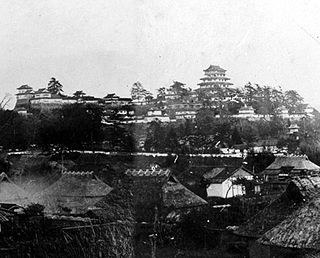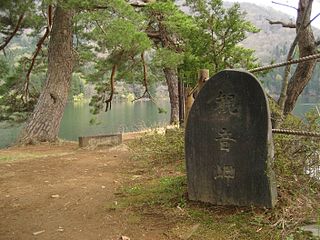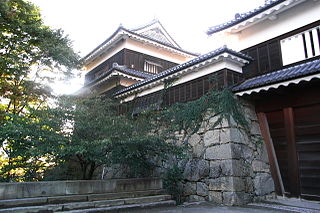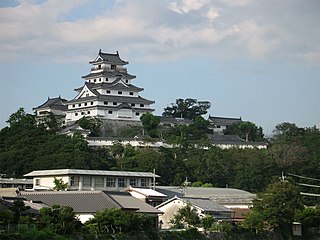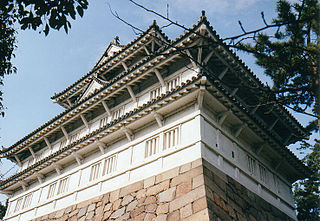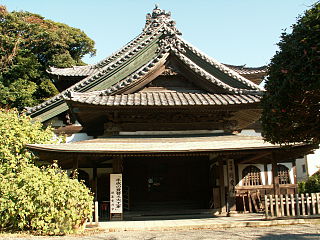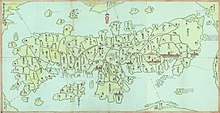Hirose Domain(広瀬藩Hirose-han) was a Japanese domain of the Edo period. It was associated with Izumo Province in modern-day Shimane Prefecture. [1]

Japan is an island country in East Asia. Located in the Pacific Ocean, it lies off the eastern coast of the Asian continent and stretches from the Sea of Okhotsk in the north to the East China Sea and the Philippine Sea in the south.
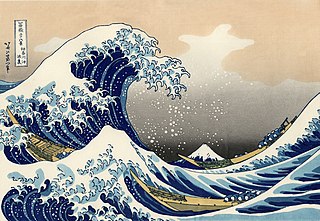
The Edo period or Tokugawa period (徳川時代) is the period between 1603 and 1868 in the history of Japan, when Japanese society was under the rule of the Tokugawa shogunate and the country's 300 regional daimyō. The period was characterized by economic growth, strict social order, isolationist foreign policies, a stable population, "no more wars", and popular enjoyment of arts and culture. The shogunate was officially established in Edo on March 24, 1603, by Tokugawa Ieyasu. The period came to an end with the Meiji Restoration on May 3, 1868, after the fall of Edo.
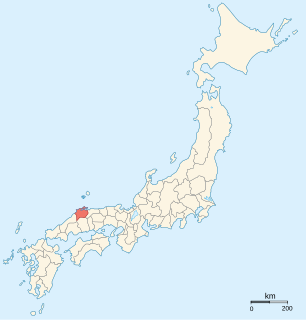
Izumo Province was an old province of Japan which today consists of the eastern part of Shimane Prefecture. It was sometimes called Unshū (雲州). The province is in the Chūgoku Region.
Contents
In the han system, Hirose was a political and economic abstraction based on periodic cadastral surveys and projected agricultural yields. [2] In other words, the domain was defined in terms of kokudaka , not land area. [3] This was different from the feudalism of the West.
The han or domain is the Japanese historical term for the estate of a warrior after the 12th century or of a daimyō in the Edo period (1603–1868) and early Meiji period (1868–1912).
Politics refers to a set of activities associated with the governance of a country, or an area. It involves making decisions that apply to members of a group.

Economics is the social science that studies the production, distribution, and consumption of goods and services.




